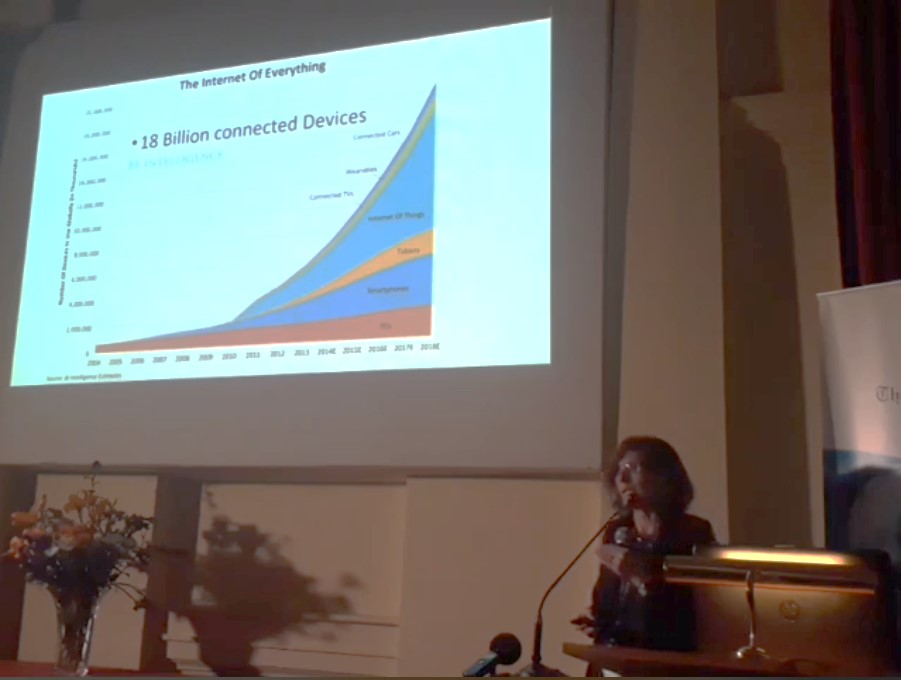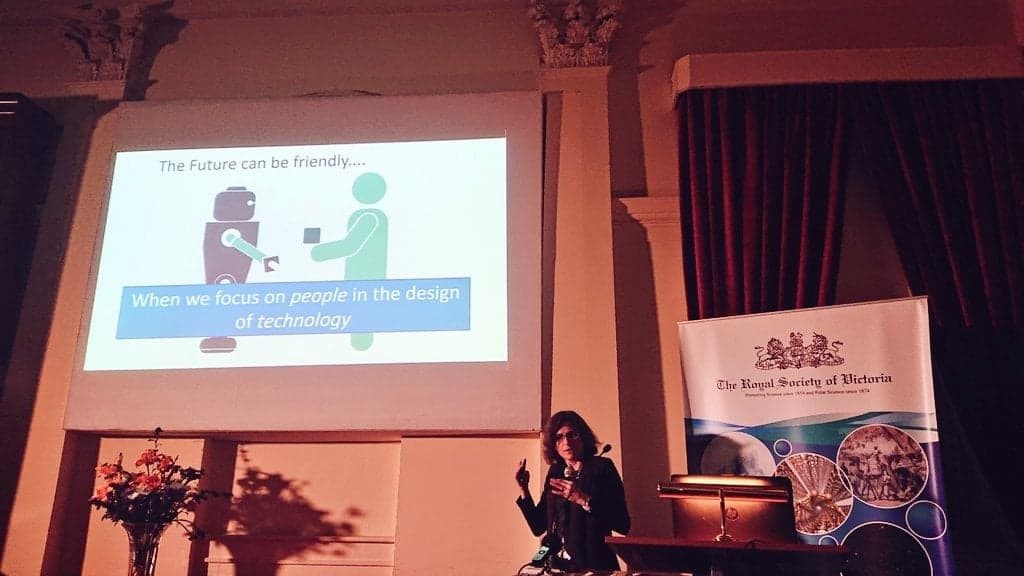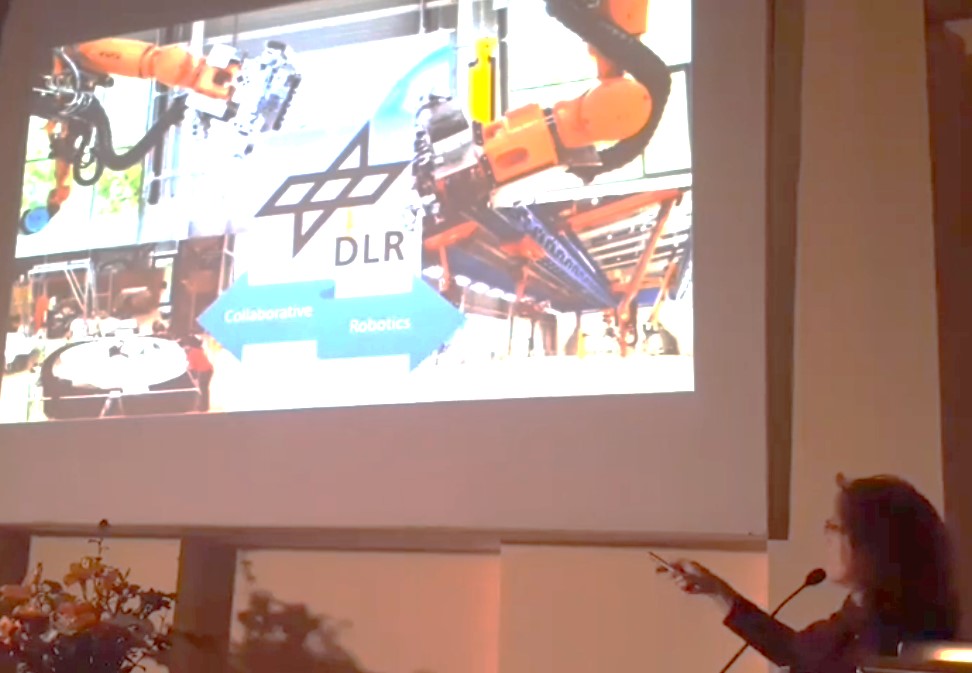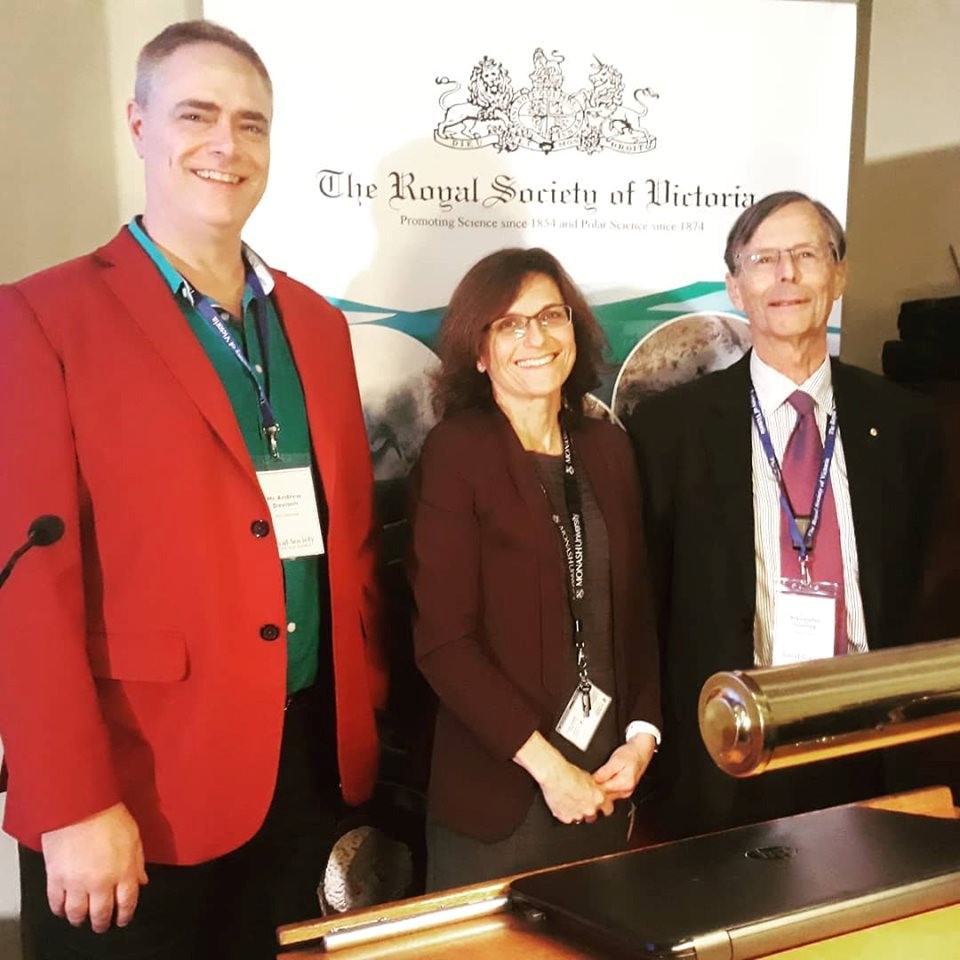Humans and Robots
 By Catriona Nguyen-Robertson
By Catriona Nguyen-Robertson
This article follows a lecture to the Royal Society of Victoria on 25 July 2019 titled “Social Work: Collaborative Human–Robot Interaction,” featuring the Dean of Engineering at Monash Universty, Professor Elizabeth Croft and presented in partnership with the Victorian Division of the Australian Academy of Technology and Engineering.

We are increasingly bringing more robots into our lives and they perform the duties that we assign them. But they remain separated from us – we have little interaction with them besides turning them on and off. Professor Elizabeth Croft is developing ways for humans and robots to live – as it were – harmoniously and work cooperatively.
When you picture a robot, you probably imagine the famous Hollywood humanoid characters, such as R2D2, Wall-E and Bender, but most robots are rather undramatic mechanical devices. They are programmed to perform the specific, repetitive tasks that we don’t want to do – the boring, dirty, complex or dangerous tasks. We use robots in our everyday lives by using the self-checkout lane in a supermarket and in other ways, and robots are quickly moving their way into assisted living, restaurants, production lines, medicine, crime fighting, and video surveillance for protection.
Linking robots with crime-fighting and surveillance is a concept seemingly taken out of science fiction. But Elizabeth made the connection years ago. After studying undergraduate mechanical engineering at the University of British Columbia, she worked in motor vehicle accident investigation – ‘it was CSI before CSI was cool’. She then wanted to explore robotics more in depth and undertook a master’s degree at the University of Waterloo followed by a PhD at the University of Toronto.
With technology becoming more compact, smarter (with artificial intelligence) and having greater computing power, robots can now make decisions at fast speeds. The future of robotics is rapidly evolving. Elizabeth believes that robots are becoming more human-like and that we therefore need better, smoother human-robot interactions. “We need to think about how we’re going to get along with the robots,” she says, after all, they are already increasingly coming into our homes.
Elizabeth wants to make sure that people are considered in the design of robots. In all of her designs, she starts by first observing people.
 The first human-robot interaction she studied was the passing of objects. She watched people passing objects between themselves over and over. She monitored the grip force at the point of passing and learned a simple rule: the giver is responsible for the object’s safety and the receiver is in charge of maintaining efficiency (i.e. the giver ensures it doesn’t fall while the receiver controls how quickly the object is taken). Once she understood the rule, she could encode robots to follow it. This enabled robots to pass objects in a fluid motion without dropping the object or requiring the receiver to yank, which is an important skill for service and medical robots.
The first human-robot interaction she studied was the passing of objects. She watched people passing objects between themselves over and over. She monitored the grip force at the point of passing and learned a simple rule: the giver is responsible for the object’s safety and the receiver is in charge of maintaining efficiency (i.e. the giver ensures it doesn’t fall while the receiver controls how quickly the object is taken). Once she understood the rule, she could encode robots to follow it. This enabled robots to pass objects in a fluid motion without dropping the object or requiring the receiver to yank, which is an important skill for service and medical robots.
 She performed a similar study when considering how humans and robots may reach for objects at the same time as they work together. If you reach a doorway at the same time as another person, for example, often you will both briefly pause to establish who will walk through first. Robots did not have this consideration. After observing people, determining rules, and encoding robots to read social cues when sharing objects and space with people, Elizabeth found that humans were much happier to interact with them.
She performed a similar study when considering how humans and robots may reach for objects at the same time as they work together. If you reach a doorway at the same time as another person, for example, often you will both briefly pause to establish who will walk through first. Robots did not have this consideration. After observing people, determining rules, and encoding robots to read social cues when sharing objects and space with people, Elizabeth found that humans were much happier to interact with them.
Robots are also being increasingly used in industrial production and assembly lines. Elizabeth taught them to work together with people to sort shapes. She asked people to complete shape-sorting tasks in pairs in silence, and mimicked their actions for “I’m done”, “move that”, “place here”. This has since been implemented in manufacturing processes that require teamwork between robots and humans.

Lastly, Elizabeth envisages delivery mail-bots that share our footpaths in the future. This may be tricky, however, as the robots have to navigate around pedestrians. Elizabeth programmed robots to follow people walking around, taking in their knack of cutting corners and meandering rather than travelling in straight lines. Eventually the robots started to move in a more socially acceptable manner and reached their destinations faster as they learned to cut corners just as people do.
To ensure that the future is robot-friendly, Elizabeth encourages engineers and programmers to focus on people in their design. At the back of her mind, she constantly thinks of designing technology that her mother would be able to use. Robots can ‘learn by watching a human teacher’ if the behaviours are broken down into something codeable. So, let’s keep humans in the loop as we bring more robots into our lives!








